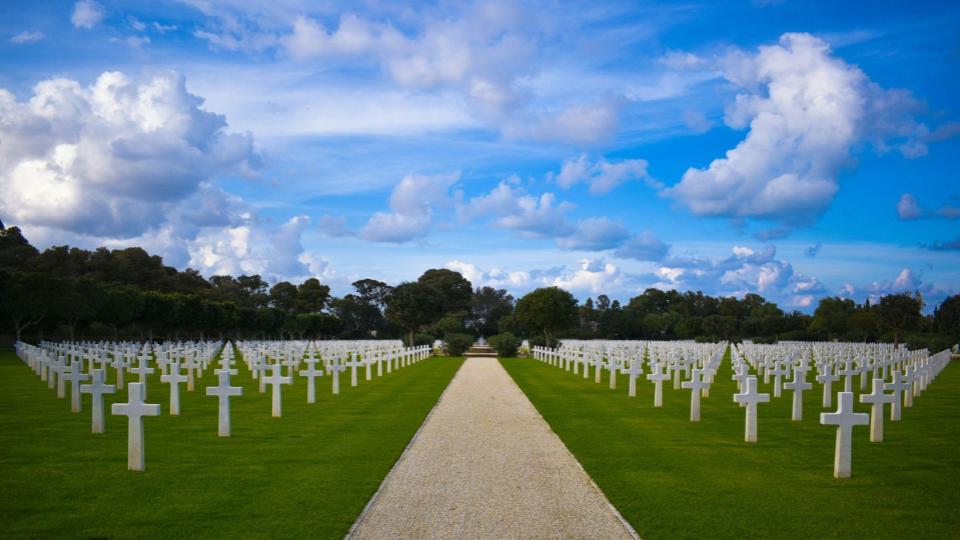
The Day of the Dead in Italy: Faith, Facts and Traditions
November 1st & 2nd in Italy: Honoring Loved Ones with Tutti i Santi and Il Giorno dei Morti
In Italy, November begins with a deeply moving and somber celebration of life and memory. The first two days, Tutti i Santi (All Saints’ Day) on November 1st and Il Giorno dei Morti (All Souls’ Day) on November 2nd, mark a time for Italian families to come together, remember, and honour those who have passed. While each Italian region has its unique way of commemorating these holidays, the customs share a common purpose: remembering the deceased lovingly and respectfully, often visiting cemeteries and sharing traditional foods like pane dei morti, which adds both flavour and meaning to the occasion.

November 1st: Tutti i Santi – A Day to Honor All Saints
Tutti i Santi, or All Saints’ Day, is a public holiday throughout Italy, celebrating canonised saints and all those who have lived righteous lives. The word “Sanctus” Saint means ‘separated”. Traditionally, Catholic families attend a special Mass on this day, filling the churches nationwide. Towns and villages are decorated with flowers, particularly chrysanthemums, which symbolize death in Italian culture and are commonly used for decorating graves during this season.
Although All Saints’ Day is a general celebration of holiness, it leads directly into Il Giorno dei Morti, the more personal day dedicated specifically to remembering family members and friends who have passed away.
November 2nd: Il Giorno dei Morti – A Day of Remembrance
The somber mood of All Saints’ Day flows into Il Giorno dei Morti, or All Souls’ Day, a day focused on honouring deceased loved ones. On this day, Italians gather to visit cemeteries, bringing flowers, lighting candles, and sometimes even leaving offerings at the graves of family members and friends. Italian cemeteries come alive with colours, scents, and the quiet presence of families paying their respects.
In some parts of Italy, families will spend significant time at the cemetery, tidying gravesites, leaving tokens of affection, and saying prayers. It is a sacred time when loved ones reconnect with those they have lost, and children are taught the importance of remembering their ancestors, emphasizing the Italian value of famiglia (family).

Venetian Tradition: The Floating Bridge to San Michele Cemetery
Venice, with its unique geography and vibrant cultural traditions, has a particularly special custom for Il Giorno dei Morti. The city’s cemetery, located on the island of San Michele, can only be accessed by boat. During this period, the city of Venice constructs a temporary ponte di barche, or “bridge of boats,” connecting the main island to San Michele. This floating bridge allows Venetians to reach the cemetery by foot, making the pilgrimage more accessible and poignant.
This bridge is not only a practical solution but also a symbol of the connection between the living and the dead, reinforcing the idea of a bridge across time. The bridge stays up for a few days, allowing residents to visit their loved ones with ease, and once the celebration is over, it is dismantled, symbolizing the closing of this sacred passage.
Pane dei Morti and Other Traditional Foods
Food, as with every Italian tradition, plays an essential role in the Giorni dei Morti. Across Italy, each region has its own way of commemorating the dead with food that is steeped in symbolism.
One of the most famous treats associated with this period is pane dei morti, literally “bread of the dead.” Originating from Milan, pane dei morti is a dense, spiced biscuit made with ingredients like cocoa, nuts, cinnamon, and often wine-soaked raisins, creating a rich, earthy flavour that reflects the essence of autumn. This bread, although a treat today, was once intended as an offering to the deceased and placed on graves or household altars.
In Sicily, they make ossa dei morti, or “bones of the dead.” These cookies are hard on the outside, representing bones, but have a soft, almond center that melts in the mouth. This symbolizes the transition from life to death, a gentle reminder that while the body may be gone, the spirit remains cherished. In parts of southern Italy, especially Puglia, they serve fave dei morti, small fava bean-shaped almond cookies, reminiscent of ancient beliefs that beans symbolized souls of the departed.
In certain regions, it’s also customary to prepare a special meal at home with an extra place set at the table, symbolically inviting the spirits of ancestors to dine with the family. This simple but moving gesture brings home the notion that, while physically absent, our loved ones remain an intrinsic part of our lives.
Regional Variations: Celebrating Across Italy
While the overarching themes of Tutti i Santi and Il Giorno dei Morti are consistent across Italy, each region has its unique customs. In Naples, for example, families spend extended time in the cemeteries and bring offerings like fruits, flowers, and bread, symbolizing both nourishment and remembrance. Some southern towns, especially in Campania and Calabria, maintain the custom of leaving small gifts or trinkets on the graves of children, such as dolls, toys, or tiny wooden cars, to show that they are remembered.
In Sardinia, one tradition involves leaving small bags of sweets for children in the morning on All Souls’ Day, a way of encouraging younger generations to remember and honour those who have passed. Similarly, in Abruzzo, children go door-to-door asking for small treats like chestnuts and sweets, a practice similar to Halloween but imbued with a deeper sense of respect and remembrance.
A Culture Rooted in Remembrance
The Italian observance of Tutti i Santi and Il Giorno dei Morti provides a beautiful example of how traditions can weave remembrance into the fabric of everyday life. For Italians, these days are not just about mourning; they’re about reconnecting with family, teaching younger generations to honour the past, and celebrating life through memory.
Whether by visiting graves, sharing symbolic food, or practising unique regional customs, Italians across the country honour their loved ones with a blend of reverence and warmth. These two days serve as a reminder of the enduring bonds between the living and the dead, and in doing so, reinforce a timeless Italian belief: that even in passing, those we love remain close to us, shaping our lives with their memory.
This tradition is both personal and collective, showcasing Italy’s respect for heritage and its dedication to family. Whether you find yourself walking across the floating bridge in Venice, sharing a piece of pane dei morti, or lighting a candle in a rural cemetery, the first days of November in Italy are a moving reminder of the connections we hold across time.






Leave a Reply